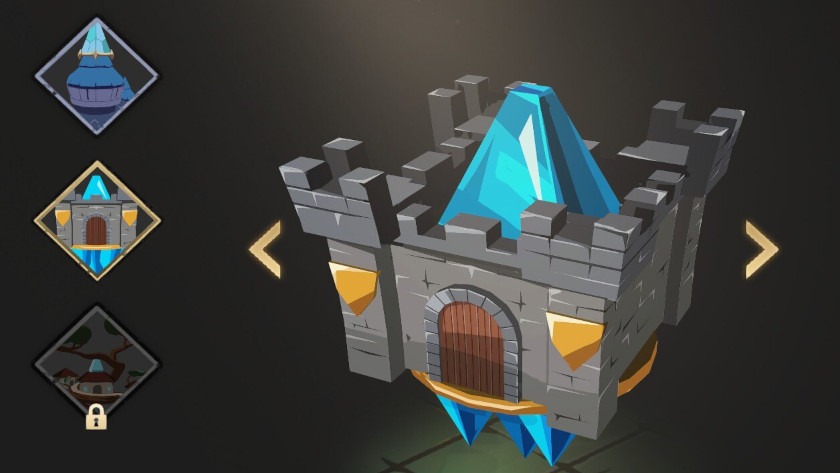Well, here’s one thing the last thing I thought about today was to dive into a game in the Tower defense genre. I mean, I’m not officially that. I’m currently playing a role-playing game that uses rogue lite and tower defense mechanics. So it’s a game that overlaps with a number of different genres, and you can add the board game genre to this list because of the way this game is set up. I haven’t seen tower defense mechanics properly deployed outside the traditional realm of trying to stop a bunch of bad guys finishing their thing in ages. That means we’re adding something to the mix that makes for a pretty interesting time. The game I’m babbling about is to defend the tower. I’ve given myself over to the PS4 version of this title and I think I’ll tell you right away if you should too.

In Defend the Rook you play as a Magister. As far as we know, they are a kind of sorcerer for hire and in this game it is the queen of the Golden Kingdom who has used their services. The kingdom is under strike by a horde of orcs commanded by a demon. You have been tasked to reverse the green skin trend and to do so, you are using your game coin box. These figures are magical and when placed on the master’s game board, they invade the playing field in the form of heroes, towers and traps. Not just any hero I can add, but the spirits of the three most powerful heroes in history. When the master places and leads these living weapons, they form a real-time defense against the enemy. The most important structure on the battlefield is the tower. It is the floating castle of the Magister and from where he plans his strikes. For obvious reasons, the tower must be protected at all costs. You will quickly realize that the impending threat from the orcs is not the only one that weighs on the kingdom. In fact, you need to defeat five commanders and their armies in several rounds if you want to be victorious. There is also something suspicious about the queen. I have a feeling that our benefactress is not all that she appears for the first time.
What makes Defend the Rook different from any other tower defense game I’ve played is that there’s not a lot of micromanagement to be done. It is not a game to place and upgrade towers to eliminate ever-growing waves of enemies; in fact, you will only use about 8 pieces. Defend the tower is a game of foresight and tactics and what you do with these coins compared to the long game. They do not think about how to deal with the next wave here, it’s about strengthening themselves for the whole game, when the enemies they face are different both in their abilities and in their approach.

Her characters consist of heroes, namely a warrior, a thief and a witch, three towers that strike at different distances, and two traps / utilitarian objects. Everything is scalable with different resources that you will find in the game. If you beat bosses over several races, you will get gems. This way you can unlock new heroes, tower types, etc. Something I love is that these are exchanged in their equipment. This is great because you only have a set number of pieces per run that you can play with. This prevents many”too many things from happening at once”, as you feel in many tower defenss games parts consist of heroes, namely a warrior, a thief and a witch, three towers that strike at different distances, and two traps / utility items. Everything is scalable with different resources that you will find in the game. If you beat bosses over several races, you will get gems. This way you can unlock new heroes, tower types, etc. Something I love is that these are exchanged in their equipment. This is great because you only have a set number of pieces per run that you can play with. This prevents many “too many things happening at once” as you feel in many tower defense games. Upgrades of your coins take place between levels (after finishing a boss), that means you are still thinking about the long game. If you complement these and the skill trees leveled by XP with your heroes and your own abilities, you will see each run as a cohesive build exercise. It’s so much better than randomly throwing upgrades at towers and hoping for the best. After all, they have a bunch of spells that improve their own units or blow up villains in a way that we all know and love. You get three spells per run and only so many uses of it, so you have to think tactically as you go.

The other thing that sets Defend the Rook apart from many other games in the tower defense genre is how the core mechanics work. I’m not really happy to call it a tower defense title (although I continue to do it), since it’s not mechanical in the strict sense, but uses a lot of elements that make this genre great.The other thing that sets Defend the Rook apart from many other games in the tower defense genre is how the core mechanics work. I’m not really happy to call it a tower defense title (although I continue to do it), since it’s not mechanical in the strict sense, but uses a lot of elements that make this genre great. There are no or several paths here that enemies of different strengths take in order to achieve an end goal. They do not focus on where they want to suffocate the enemy and create bottlenecks.

